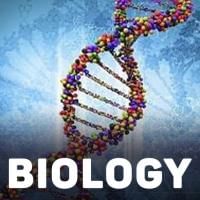NEET Exam > NEET Questions > What is limiting reagent and how to find it o...
Start Learning for Free
What is limiting reagent and how to find it ols exolain with a example in detail?
Most Upvoted Answer
What is limiting reagent and how to find it ols exolain with a example...
Limiting Reagent:
The limiting reagent is the reactant that is completely consumed in a chemical reaction, thereby limiting the amount of product that can be formed. It determines the theoretical yield of the reaction. The reactant that is not completely consumed is called the excess reagent.
Finding the Limiting Reagent:
To determine the limiting reagent in a chemical reaction, you need to compare the stoichiometric ratios of the reactants to the desired product. The reactant that produces the smallest amount of product is the limiting reagent.
Here's a step-by-step example to find the limiting reagent:
Example:
Consider the reaction between hydrogen gas (H2) and oxygen gas (O2) to form water (H2O):
2H2 + O2 → 2H2O
Let's say we have 4 moles of H2 and 3 moles of O2. We need to determine which is the limiting reagent.
1. Calculate the moles of product:
- For H2: 4 moles H2 × (2 moles H2O / 2 moles H2) = 4 moles H2O
- For O2: 3 moles O2 × (2 moles H2O / 1 mole O2) = 6 moles H2O
2. Compare the moles of product:
- H2 produces 4 moles of H2O.
- O2 produces 6 moles of H2O.
3. Identify the limiting reagent:
- Since H2 produces a smaller amount of product (4 moles), it is the limiting reagent.
4. Calculate the excess reagent:
- Excess O2 = moles of O2 reacted - moles of O2 required by limiting reagent
- Excess O2 = 3 moles O2 - (4 moles H2 × 1 mole O2 / 2 moles H2) = 1 mole O2
Conclusion:
In the given example, hydrogen gas (H2) is the limiting reagent because it produces a smaller amount of product. Oxygen gas (O2) is the excess reagent, with 1 mole remaining after the reaction.
By identifying the limiting reagent, we can determine the maximum amount of product that can be formed in a reaction. This information is crucial for calculating the theoretical yield and understanding the efficiency of a chemical process.
The limiting reagent is the reactant that is completely consumed in a chemical reaction, thereby limiting the amount of product that can be formed. It determines the theoretical yield of the reaction. The reactant that is not completely consumed is called the excess reagent.
Finding the Limiting Reagent:
To determine the limiting reagent in a chemical reaction, you need to compare the stoichiometric ratios of the reactants to the desired product. The reactant that produces the smallest amount of product is the limiting reagent.
Here's a step-by-step example to find the limiting reagent:
Example:
Consider the reaction between hydrogen gas (H2) and oxygen gas (O2) to form water (H2O):
2H2 + O2 → 2H2O
Let's say we have 4 moles of H2 and 3 moles of O2. We need to determine which is the limiting reagent.
1. Calculate the moles of product:
- For H2: 4 moles H2 × (2 moles H2O / 2 moles H2) = 4 moles H2O
- For O2: 3 moles O2 × (2 moles H2O / 1 mole O2) = 6 moles H2O
2. Compare the moles of product:
- H2 produces 4 moles of H2O.
- O2 produces 6 moles of H2O.
3. Identify the limiting reagent:
- Since H2 produces a smaller amount of product (4 moles), it is the limiting reagent.
4. Calculate the excess reagent:
- Excess O2 = moles of O2 reacted - moles of O2 required by limiting reagent
- Excess O2 = 3 moles O2 - (4 moles H2 × 1 mole O2 / 2 moles H2) = 1 mole O2
Conclusion:
In the given example, hydrogen gas (H2) is the limiting reagent because it produces a smaller amount of product. Oxygen gas (O2) is the excess reagent, with 1 mole remaining after the reaction.
By identifying the limiting reagent, we can determine the maximum amount of product that can be formed in a reaction. This information is crucial for calculating the theoretical yield and understanding the efficiency of a chemical process.

|
Explore Courses for NEET exam
|

|
Question Description
What is limiting reagent and how to find it ols exolain with a example in detail? for NEET 2025 is part of NEET preparation. The Question and answers have been prepared according to the NEET exam syllabus. Information about What is limiting reagent and how to find it ols exolain with a example in detail? covers all topics & solutions for NEET 2025 Exam. Find important definitions, questions, meanings, examples, exercises and tests below for What is limiting reagent and how to find it ols exolain with a example in detail?.
What is limiting reagent and how to find it ols exolain with a example in detail? for NEET 2025 is part of NEET preparation. The Question and answers have been prepared according to the NEET exam syllabus. Information about What is limiting reagent and how to find it ols exolain with a example in detail? covers all topics & solutions for NEET 2025 Exam. Find important definitions, questions, meanings, examples, exercises and tests below for What is limiting reagent and how to find it ols exolain with a example in detail?.
Solutions for What is limiting reagent and how to find it ols exolain with a example in detail? in English & in Hindi are available as part of our courses for NEET.
Download more important topics, notes, lectures and mock test series for NEET Exam by signing up for free.
Here you can find the meaning of What is limiting reagent and how to find it ols exolain with a example in detail? defined & explained in the simplest way possible. Besides giving the explanation of
What is limiting reagent and how to find it ols exolain with a example in detail?, a detailed solution for What is limiting reagent and how to find it ols exolain with a example in detail? has been provided alongside types of What is limiting reagent and how to find it ols exolain with a example in detail? theory, EduRev gives you an
ample number of questions to practice What is limiting reagent and how to find it ols exolain with a example in detail? tests, examples and also practice NEET tests.

|
Explore Courses for NEET exam
|

|
Signup to solve all Doubts
Signup to see your scores go up within 7 days! Learn & Practice with 1000+ FREE Notes, Videos & Tests.




















